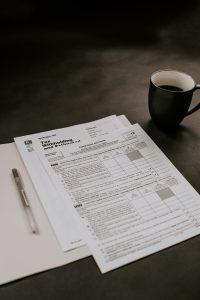Forex trading is a high-risk investment that involves buying and selling currencies in the foreign exchange market. As with any investment, there is always the possibility of losing money. When a forex trader experiences a loss, it is important to report it for tax purposes. In this article, we will explain how to report loss for forex trader in 2017.
The first step in reporting a forex loss is to determine if the loss is considered a capital loss or an ordinary loss. A capital loss is the difference between the purchase price and the sale price of an asset, while an ordinary loss is a loss incurred in the course of doing business. If you are a forex trader who is trading for your own account and not as part of a business, your losses will likely be considered capital losses.
Once you have determined that your loss is a capital loss, the next step is to calculate the amount of the loss. To do this, you will need to know the basis of the currency you sold, which is the price you paid for it. You will also need to know the amount you received for the currency when you sold it. The difference between these two amounts is the amount of your loss.
When reporting your forex loss, you will need to use IRS Form 8949. This form is used to report the sale of capital assets, including currency. You will need to fill out a separate Form 8949 for each currency you sold during the year. On the form, you will need to provide the following information:
– Your name and taxpayer identification number
– The date you acquired the currency
– The date you sold the currency
– The basis of the currency
– The amount of the sale proceeds
– The amount of the loss
Once you have completed the Form 8949 for each currency you sold during the year, you will need to transfer the information to Schedule D of your tax return. This schedule is used to calculate your overall capital gains and losses for the year. You will need to provide the total amount of your losses on Schedule D, along with any other capital gains or losses you may have incurred during the year.
It is important to note that if you have net capital losses for the year, you may be able to use them to offset other types of income, such as wages or interest income. However, there are limits to the amount of capital losses you can use to offset other income. If your losses exceed these limits, you may be able to carry them forward to future tax years.
In addition to reporting your forex losses on your tax return, it is also important to keep accurate records of your trading activity. This includes keeping track of the dates and prices of all trades, as well as any fees or commissions you paid. By keeping detailed records, you can ensure that you are accurately reporting your losses and avoiding any potential IRS audits or penalties.
In conclusion, reporting forex losses for tax purposes can be a complex process, but it is essential for any forex trader who wants to stay compliant with IRS regulations. By understanding the steps involved in reporting forex losses, you can ensure that you are accurately reporting your losses and maximizing your tax benefits. If you are unsure about how to report your losses, it may be best to consult with a tax professional who is familiar with forex trading and tax laws.





